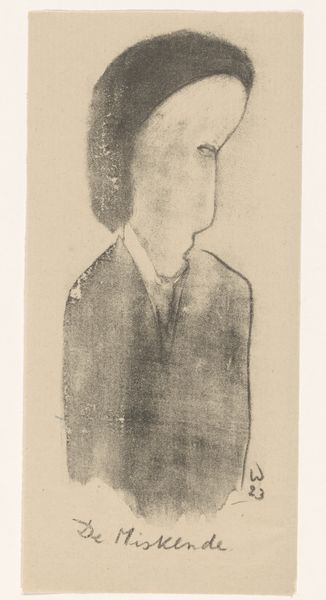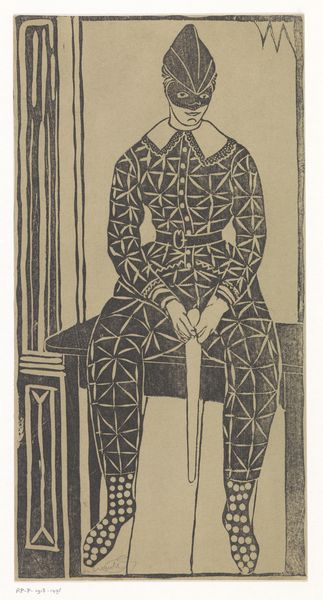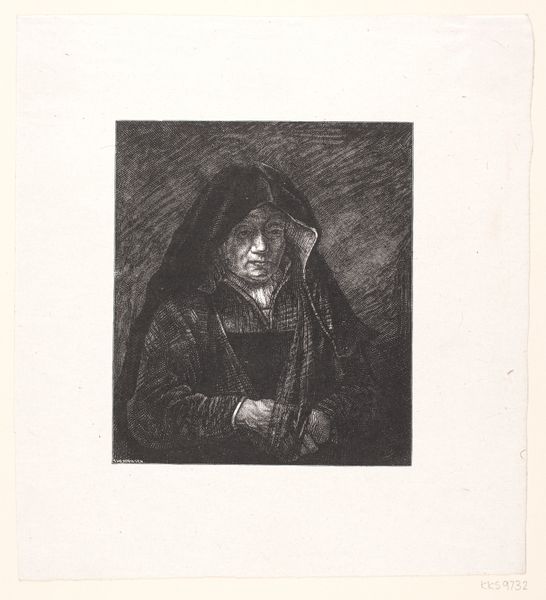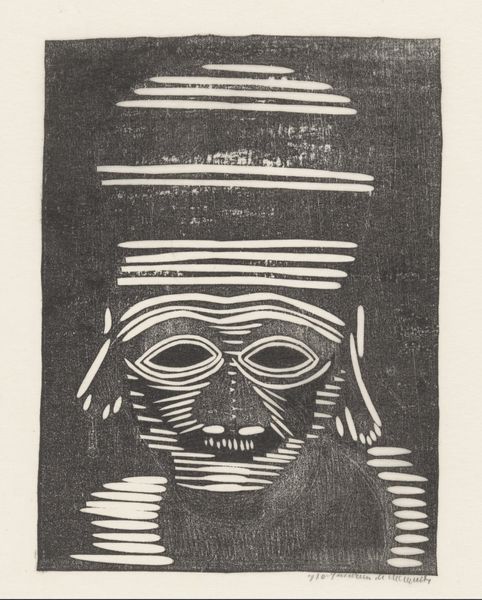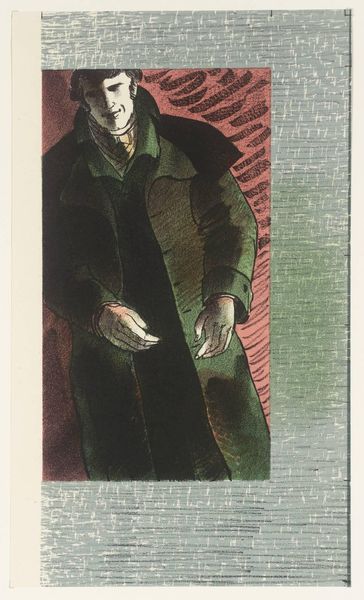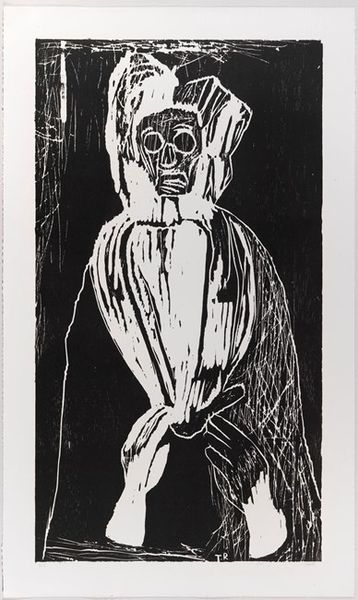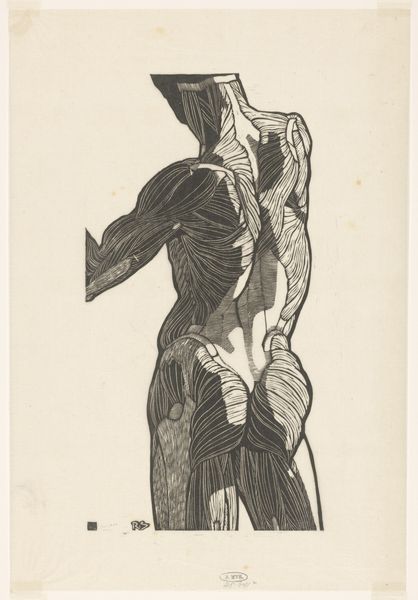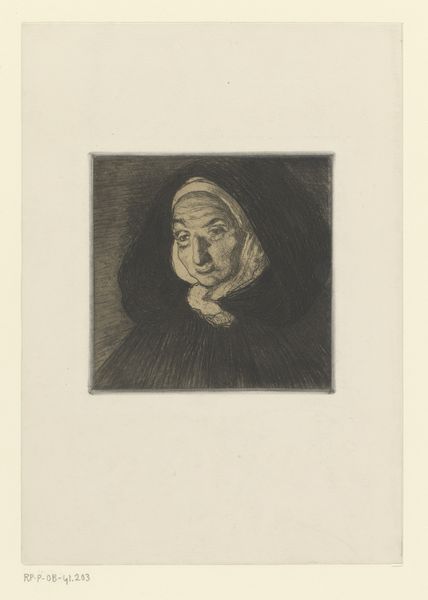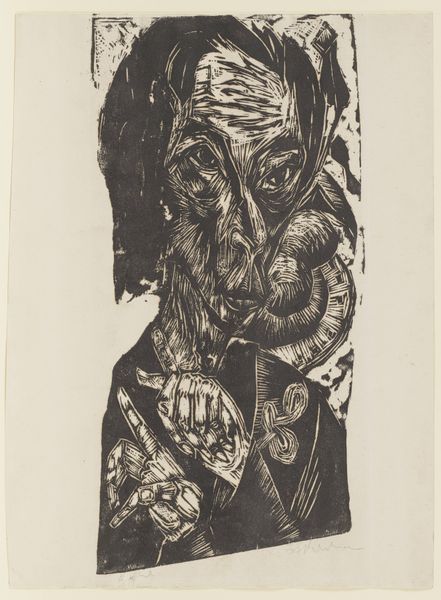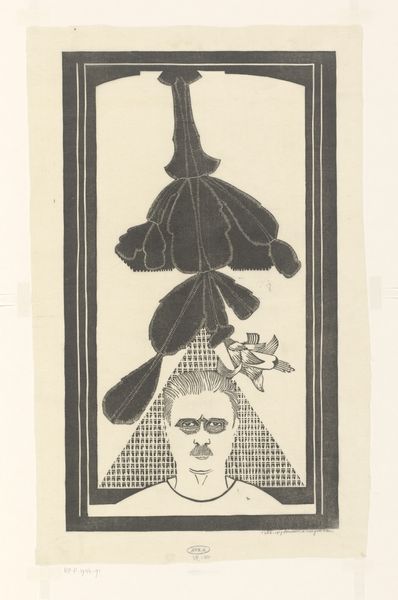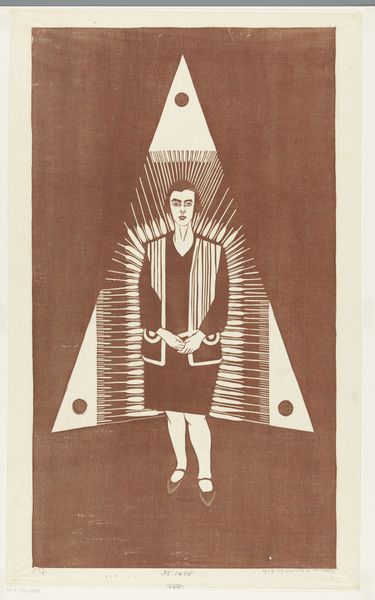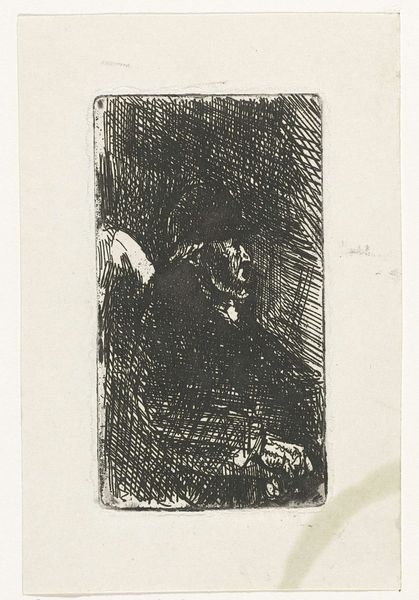
Dimensions: height 299 mm, width 163 mm
Copyright: Rijks Museum: Open Domain
Editor: This woodcut, "Kale Man" by Samuel Jessurun de Mesquita, dates from the 1930s. The stark contrast and exaggerated features create a rather unsettling, almost grotesque, effect. How do you interpret this work? Curator: Given the date, the looming shadow of authoritarianism is hard to ignore. Expressionism often became a visual language for unease, and even resistance. Look at the almost caricatured features – the large head, the stooped posture. Does this evoke a sense of powerlessness or perhaps a subtle mocking of authority? Editor: I hadn't considered that. I was focused on the ugliness of the figure, rather than its possible symbolism. Could the “Kale Man” represent a critique of the era's social structures? Curator: Precisely. De Mesquita, being of Sephardic Jewish descent, was likely very aware of the growing dangers of the time. The grotesque can become a tool, a way to dismantle prevailing ideas of beauty and expose underlying anxieties. How does the medium – the starkness of the woodcut – contribute to this feeling? Editor: It adds to the severity, almost like a propaganda poster in reverse – instead of glorifying, it seems to be warning. The lack of subtlety really drives the message home. Curator: Yes, and consider the title: “Kale Man.” Is it literal, or a metaphor? Could it relate to "Kalles," an ethnic slur for Balkaners during the interwar period, and therefore be hinting to persecution and ethnic marginalization? This is how the artwork speaks beyond its surface and gets deeply engraved into History. Editor: This completely reframes my understanding. I saw an ugly portrait; now I see a potentially powerful statement about social and political tensions of the time. Curator: Art often acts as a mirror to society's anxieties, and understanding that connection can drastically alter our interpretation. Editor: Thank you, this was extremely enlightening, I'll try to incorporate that lens of social commentary into my other analysis from now on!
Comments
No comments
Be the first to comment and join the conversation on the ultimate creative platform.

